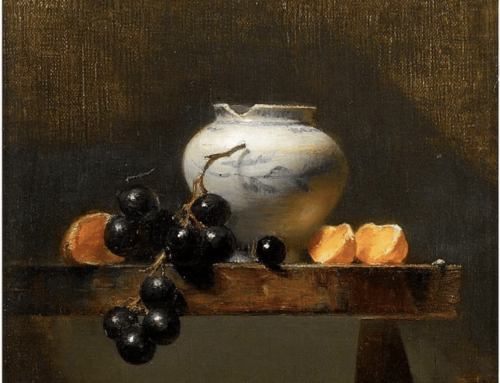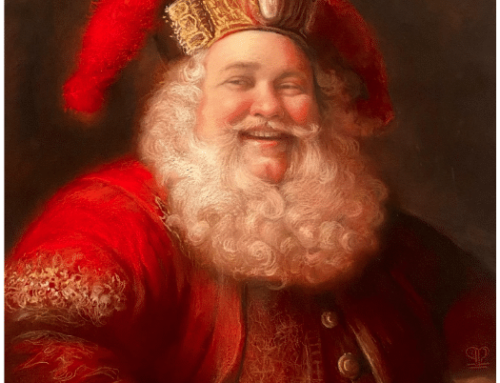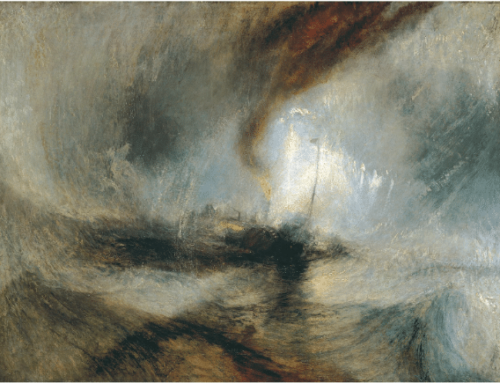Yayoi Kusama is perhaps the most universally beloved artist working today. She’s a painter and sculptor who turns her whimsical artworks and ideas into room-size, floor-to-ceiling pieces that she installs in galleries, museums, and public spaces all over the world.
To walk into one of her famously Instagrammable “Infinity Rooms,” you have to get tickets days in advance, and even then you’ll wait in line (they seem immense inside but in reality they’re small, glass rooms that can’t accommodate more than a handful of people at a time).
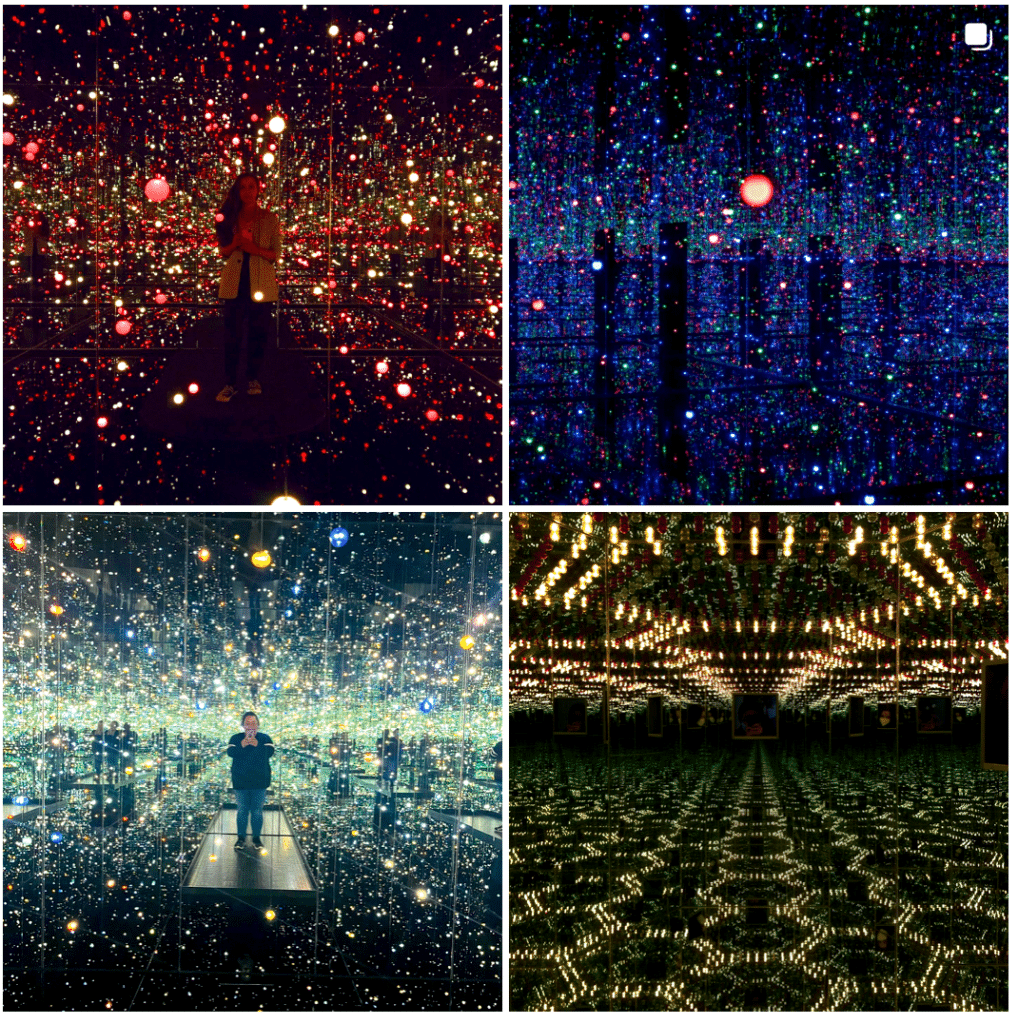
Screenshot of Infinity Room selfies currently trending on Instagram
As soon as you see her work you know why. She conjures extraordinary experiences for her viewers in myriad sculptural creations that resonate with playfulness, wonder, and joy. When you open the door to one of her Infinity Rooms, you find yourself in the center of a seemingly infinite universe of dancing natural and artificial light.
To me, that’s a pretty good description of what a good painting can do.
New York gallery David Zwirner is currently hosting a free exhibition of a wide selection of Kusama’s works. One of the artist’s largest gallery exhibitions to date, I Spend Each Day Embracing Flowers opened on May 12th to lines clocking in at over two-hours long.
Among Kusama’s latest paintings and sculptures there is a new Infinity Room titled Dreaming of Earth’s Sphericity, I Would Offer My Love. The gallery underlines how the work relates to painting when they say, “The countless reflections created by the mirrors eliminate a fixed perspective and offer glimpses into parallel worlds, just like the artist’s Infinity Nets can be seen to push painting to its spatial limits.” It’s as if this artist took a joyous, colorful abstract painting and blew it up so we can live inside it at the very moment it explodes.
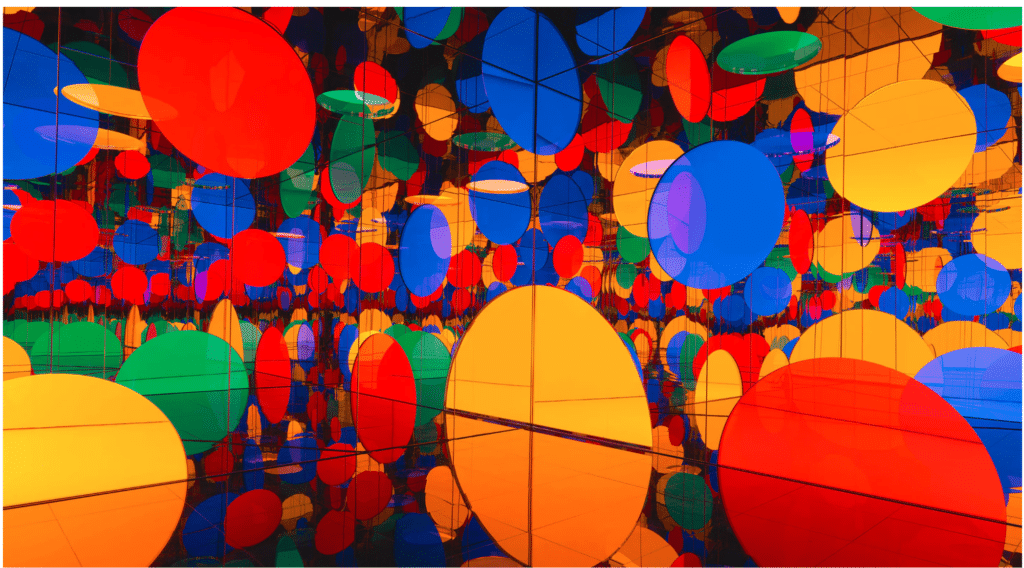
Installation view, Yayoi Kusama, Dreaming of Earth’s Sphericity, I Would Offer My Love, 2023, in Yayoi Kusama: I Spend Each Day Embracing Flowers, David Zwirner, New York, 2023
According to the Smithsonian Institution, Kusama created her first infinity room in 1965 called Phalli’s Field. Kusama’s “kaleidoscopic environments” delight and fascinate by shifting onlookers’ perception and creating beautiful illusory realities. In this one, a guard ushers you inside a stainless steel box with blue, green, red, and orange circular windows. “It resembles a blown-up version of some sort of children’s toy,” remarked a critic.
Inside, the viewer is surrounded on all sides by bursts of prismatic primary color seemingly hovering within infinite space. Everyone gets to spend just two minutes in the room. Kusama’s signature dots, whether twinkling like stars or adorning her clothing, have earned her the moniker “the polka-dot queen.” But, on the more serious side, the polka-dot motif links her work to the 1960s American pop art movement she helped get off the ground.
The big colorful dots in photos of Dreaming of Earth’s Sphericity, I Would Offer My Love reminded me of something from my childhood that I couldn’t quite place until it popped into focus – Tiddleywinks!

You had to try to flip them into the cup. We also used the similar translucent plastic “counting dots” for learning elementary school math. I’m told adult kids use them for keeping score in Bingo.
Kusama’s art, like the” flowers” she embraces, becomes a message of love – a reminder to take life lightly, to remember to PLAY, and to see in even the simplest beauties the importance of a life lived joyfully and without fear.
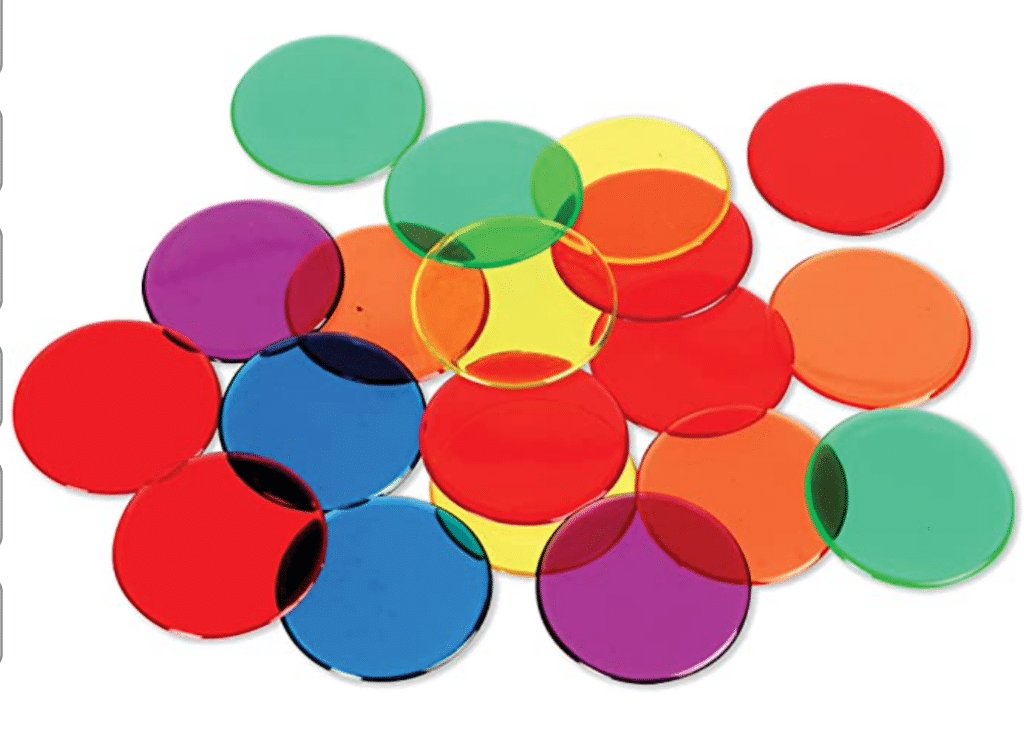
Indeed, the artist alludes to the perpetual importance of childhood joy in a special message that accompanies her New York show: “I’ve Sung the Mind of Kusama Day by Day, a Song from the Heart. O Youth of Today, Let Us Sing Together a Song from the Heart of the Universe!” – Yayoi Kusama
To that I say, YES!
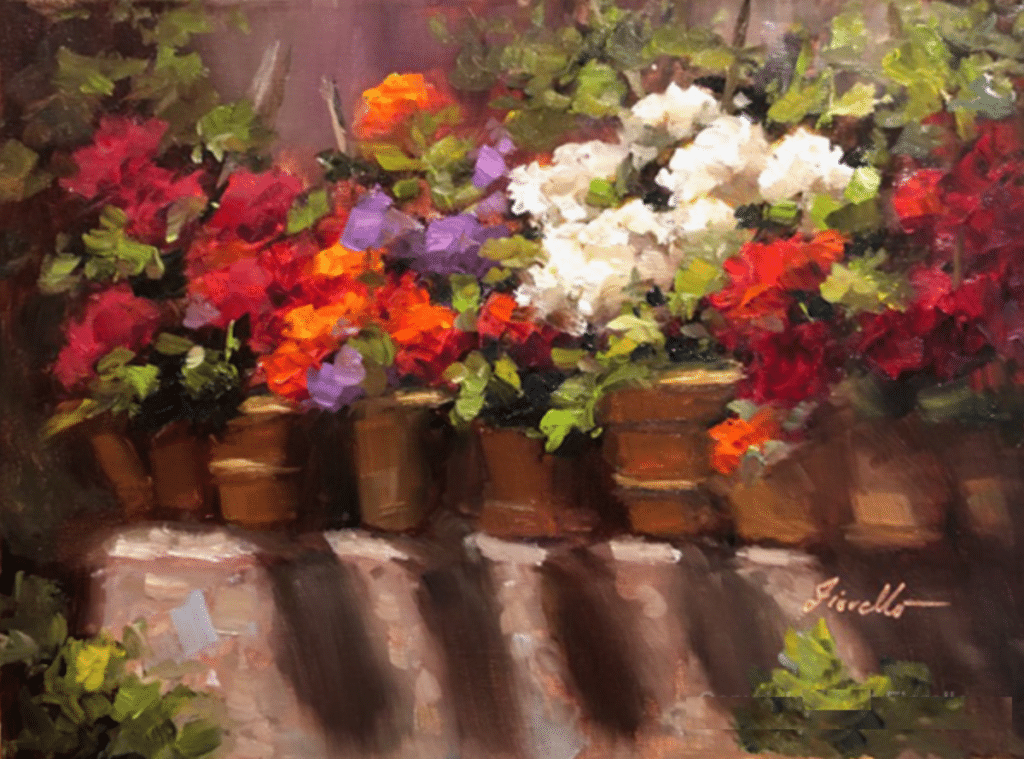
Pat Fiorello, Wall of Flowers, oil, 9×12 inches
Flowers have long been a major subject in all kinds of art. In her video Vibrant Flowers: Paint Your Garden!, Pat Fiorello will teach you a very specific method of how to achieve vibrant, clean colors and a luminous glow – and how to realistically capture the beauty and essence of flowers. If you’re interested in a loose & fresh attitude with your approach to painting the big bright colors of flowers instead of getting hung up with every last detail, check out Pat’s video here.
Painting the Landscape in Three Sessions: How I Painted Saddle Peak |
| By Aaron Schuerr |
| The following is part of a series in Inside Art’s sister publication, Pastel Today, featuring a leader in the art community who will be joining us on the faculty of Pastel Live, a virtual art conference taking place August 17-19, 2023.
Quick Demo: Painting the Landscape in 3 Stages I work fast to capture the quality of light and shifts of color in “Saddle Peak Winter Study.” I will bring the 12 x 16-inch study with me on three additional painting sessions to remind me of the effects I’m aiming to achieve on a larger canvas. |
 |
| A quick study of Saddle Peak |
| Painting Session 1 To take advantage of the limited amount of sunlight available to me this time of year, I break down the painting process over several sessions. At this stage, I pay particular attention to the light and shadow patterns as I block in the basic shapes. |
 |
| Painting Session 1 |
To read more and see the final result, go here.


